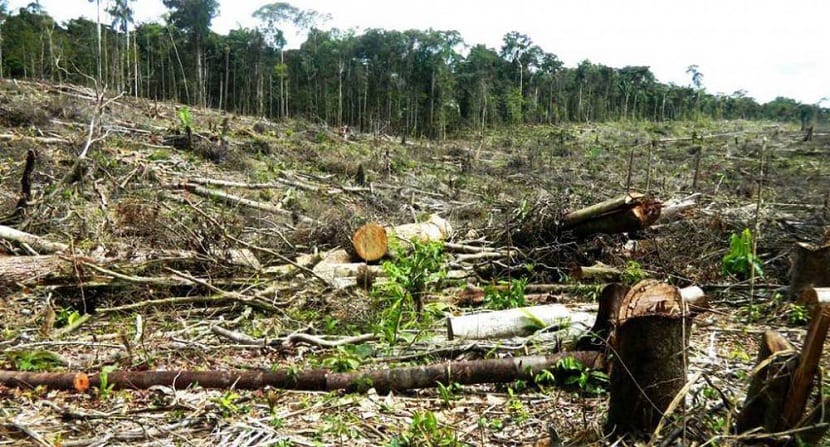
Deforestation is a direct consequence of human activities that devastates the forests and jungles of the Earth in a massive way. The damage that this generates is enormous both on a local, regional and even planetary scale.
Today, the forests and jungles of the world, they still cover 30% of the entire earth's surface, However, there are strips the size of Panama that lose millions of hectares each year. What are the causes and consequences of this deforestation?
Deforestation of forests and jungles around the world

The human being in their economic activities, in their settlements, industrial and agricultural activities, etc. You need to occupy a territory. Year after year, Millions of hectares have been cut down to change land uses and extract wood for numerous applications. That is why tropical forests and rain forests could completely disappear within a hundred years if the current rate of deforestation continues.
Apart from getting paper, the reasons for cutting down trees are many. It is true that most of these reasons are related to financial gain or the need of farmers to be able to support their families. Deforesting a forest to carry out agricultural activity is something that has been done for almost all of history, since agriculture and livestock were discovered.
On the other hand, there are commercial logging operations. These provide paper and wood pulp products to the world market and It is responsible for cutting down countless forests each year. Added to all this is the stealth action of many loggers who build roads to access increasingly remote forests. These activities have a great impact on the flora and fauna of the entire planet.
Services offered by forests and jungles
Deforestation occurs due to the exploitation of wood and the territory. When we eliminate a forest and that land is used for an urbanization or for agricultural activity, the capacity of the earth's surface to be able to control its own climate and its chemical composition decreases. As we well know, trees produce the oxygen we breathe and are responsible for absorbing the CO2 we emit.
Today the scientists who are most concerned about climate change are investigating all kinds of possible mechanisms to absorb CO2, when the most natural and efficient is this: a large forest or a jungle. In addition to that we would help the conservation of biodiversity, since species need habitats where they can develop and live well. If we cut down the forests we will be able to fragment their habitats and break the ecological balance.
And there is more: forests serve other vital services. They collect and filter our fresh water, thereby maintaining the planet's general hydrological cycle and moderating floods or droughts. They preserve the health of the soil because they support the fertile topsoil, rich in nutrients, in place. How do we think of destroying such undoubted allies?
Relationship of forests and rainfall patterns
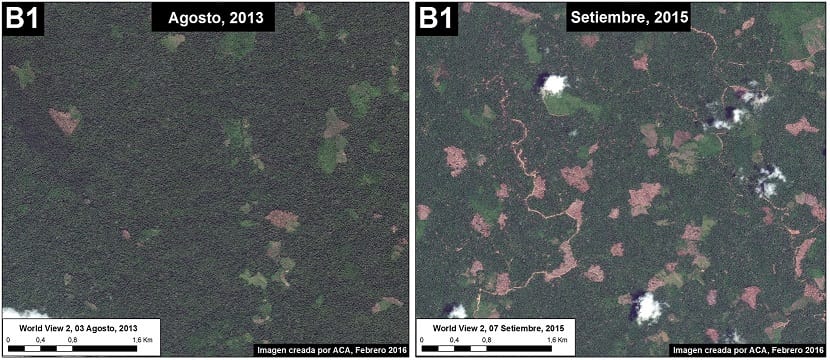
One of the most important functions of trees is their ability to evaporate huge volumes of water through their leaves. This process begins when water, due to the heat of the sun, evaporates (goes from a liquid to a gaseous state) and enters the atmosphere as water vapor. As it rises and as the temperature decreases, the water vapor condenses (turns into small droplets) forming clouds. The water condensed in the clouds finally falls as rain on the continents, thus allowing the growth of trees and their roots, as well as that of other living organisms.
Once the leaves of the trees fall and rot on the ground, they serve as nutrients for the bacteria in the soil, thus closing a cycle of matter. This means that as the trees are eliminated from the planet, the rainfall regime will also decrease since their relationship is closely linked. Without the rain the land will begin to die, causing strong erosion and the forest area will eventually turn into a desert, not to mention human beings and their great dependence on drinking water for almost everything.
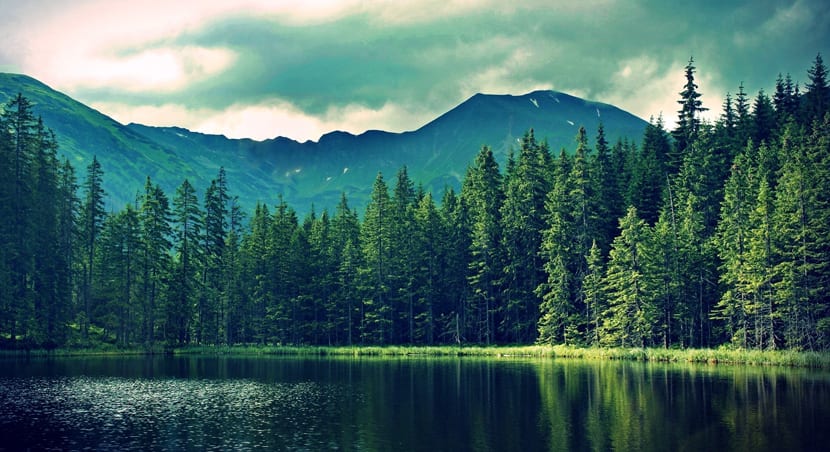
Main causes of deforestation
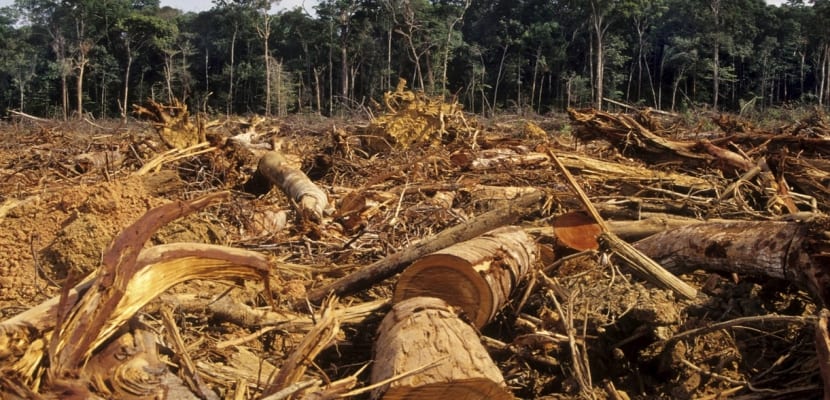
We have named the main causes of deforestation before, but we are going to go into detail. We begin with the change in the use of land and water for agricultural and livestock activities. Farmland favors trade and provides food for families and, in general, for an entire population. Agriculture and livestock they are the basis for settlements and for the prosperity of a community. However, the territory used for agriculture displaces the forests and with them, all the species of flora and fauna that are associated. It is as if a tsunami or a hurricane destroyed our city, what would we do? For animals, plants, bacteria and other organisms in an ecosystem such as the rainforest, cutting them down to destruction has an effect similar to that of a hurricane in a city.
Another leading cause of deforestation is wildfire. Most of the fires that take place around the world are intentionally man-made. Either by arsonists or by economic interests such as being able to build an urbanization on the land and profit. We also have forest diseases and pests that destroy a large part of the flora and fauna of the place, causing the relations between species to be impoverished and causing the ecosystem to die.
Today, the massive clearing of forests and jungles constitute a great threat. If we statistically analyze deforestation rates in the different ecologically important areas (among which are humid tropical forests, dry tropical forests, plain forests, mountain forests), it can be concluded that, in recent years, this process has been very successful. more intense in dry and semi-arid areas, especially in the mountains. Every year we lose 13 million hectares of native forest in the world, especially tropical forests in Asia, Africa and America.
Deforestation of the Amazon

As we all know, the Amazon Rainforest is the largest on Earth. It is known as the lung of our planet and covers more or less 40% of the entire South American territory. Of the entire carbon cycle that takes place on our planet and which is vital for the survival of life as we know it, a large percentage is produced in the Amazon. That is why it is known as a lung.
We also add to what is in it the second longest river in the world, the Amazon River, with about 6.400 km. Throughout its basin more than 30 million people live in countries such as Brazil, Bolivia, Peru or Ecuador.
Tropical vegetation around the world traps about 200.000 billion tons of carbon a year. Of them, 70.000 million are processed by Amazonian trees. Thus, the greater deforestation, the greater amount of carbon is converted into carbon dioxide, as a consequence, less absorption capacity by trees, since there are fewer trees, and therefore more carbon dioxide in the atmosphere. of the planet.
The causes of deforestation in the Amazon are the same as in the rest of the world. Growing needs of territory where to sow and work agriculture for the production and feeding of the families. With the massive felling of trees to get space to plant, the total CO2 of the planet increases, since there are no trees that absorb it through photosynthesis.
Deforestation in Spain?
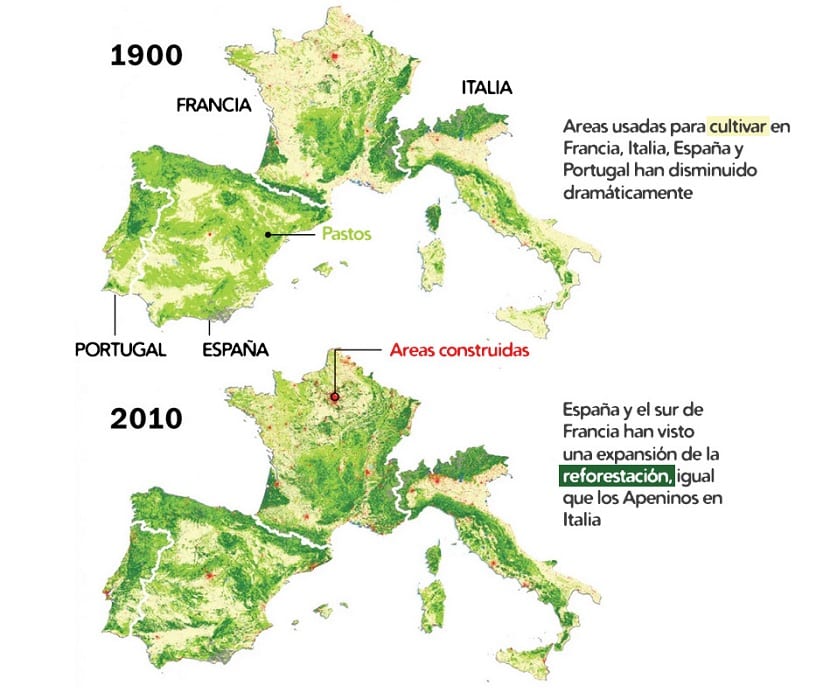
There is a general belief about deforestation in Spain. However, Spain is greener now than 100 years ago. According to data accumulated by scientists, the land that is dedicated to human and urban settlements is still similar to that of the beginning of the century, since the most common form of construction is that of the compact model. Also the land dedicated to cultivation remains the same or similar, however, the land dedicated to forests has increased. But not only in Spain, but throughout Europe.
The land reconquered by forests in Spain have grown by 20% in the last 110 years. This is because Europe began to import a large part of its food, so that feeding its population no longer put pressure on its own soil. Over time, those crops that were no longer needed became meadows and then forests.
Although what we have to keep in mind is that this it is not in itself a positive thing. It is simply a mere change in land use. This does not mean anything about how natural or healthy the forests are. There may be large forests with little biodiversity or poor in recreational use.
Consequences of deforestation
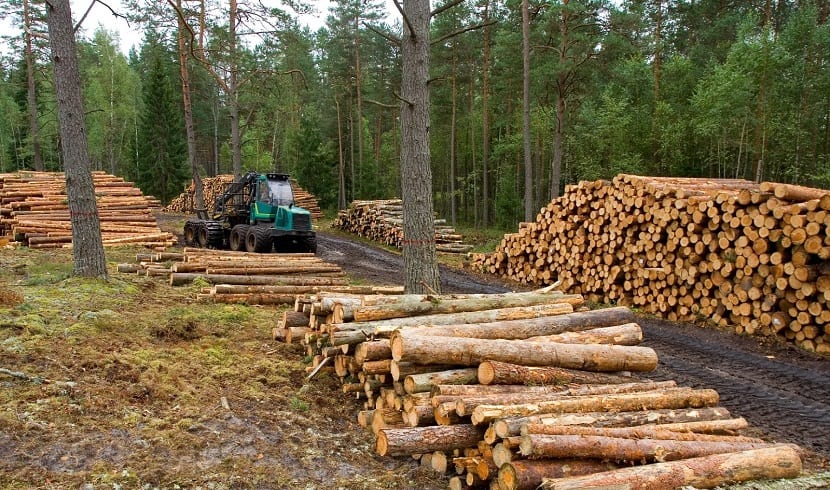
The main consequences of deforestation are quite clear looking at everything we have talked about. The one that affects us the most is that it increases the greenhouse effect, since there are not so many trees that can absorb the CO2 emitted and thus reduce the amount of gases in the atmosphere. This contributes to climate change and the increase in the frequency and intensity of extreme meteorological phenomena.
We also find a change in land uses. Biodiversity in places with large forest masses is affected by the fragmentation of their ecosystems and their habitats. This causes a decrease in biodiversity and the extinction of species.
As you can see, the consequences of deforestation in the world wreak havoc and it is vital for the planet to conserve our forests.
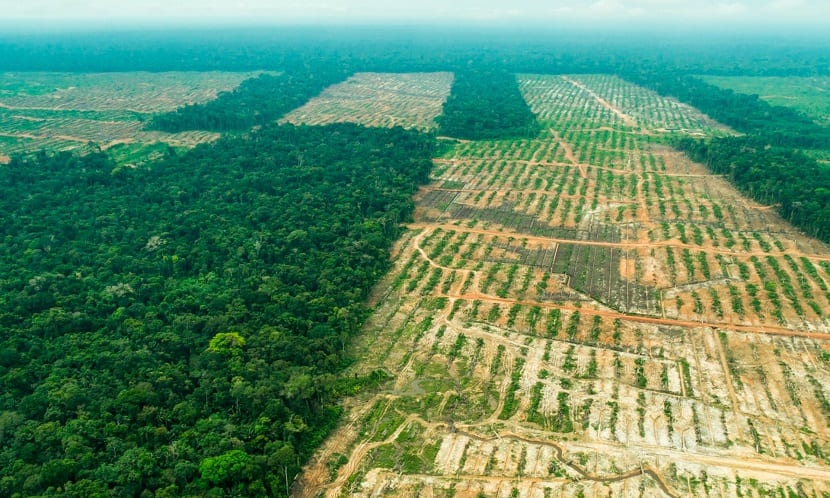
FUCKING PENIS
For citation registration purposes, what is the exact publication date of this article?